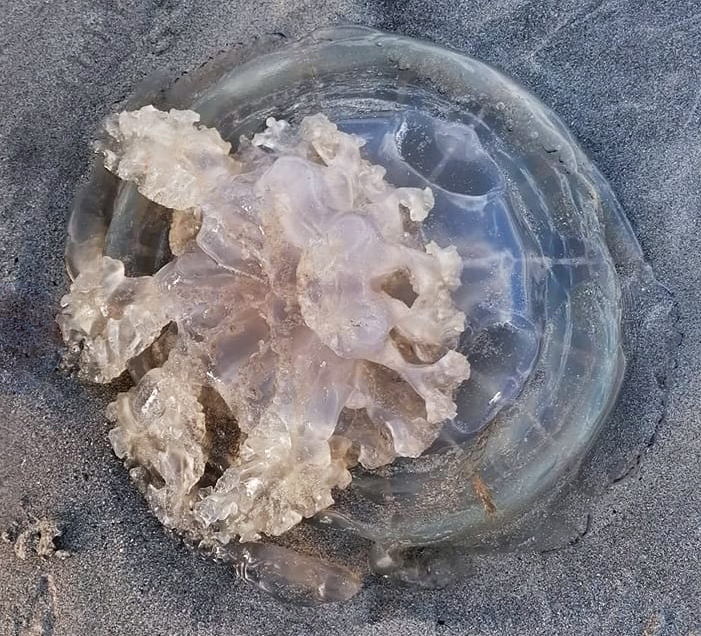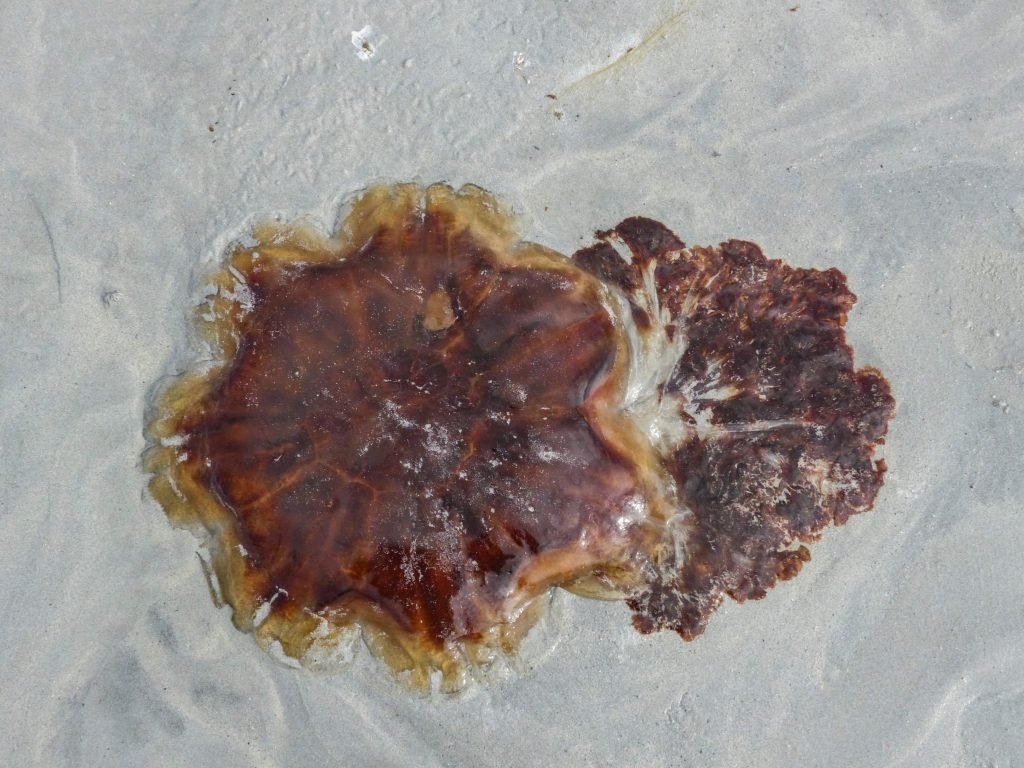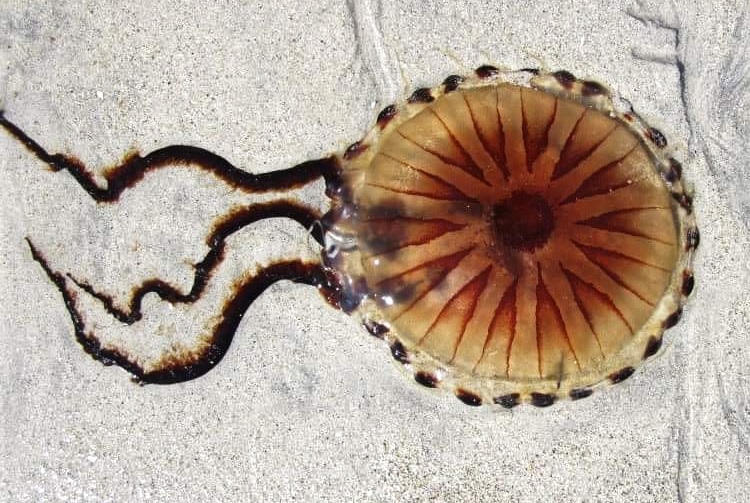Graceful and insubstantial but beware of the sting in the ‘tail’.

This is not an invitation to a beach picnic, just a suggestion that the next time you see a large amorphous blob of jelly stranded on the shore that you stop and have a closer look. Try to imagine it drifting in the sea, supported by the water the bell expands, the tentacles float free and drift below a translucent dome. A familiar inhabitant of our coastal waters, they swim and drift on the currents feeding on plankton. Jellyfish move by pulsating contractions of the bell, and as they are not strong swimmers are vulnerable to being driven onshore by strong winds.
The outer layers of the bell enclose the body cavity with a single opening. The tentacles are covered with stinging cells or nematocysts, which on contact release a thread charged with venom. They do not have a brain, but their two neural networks support a surprisingly sophisticated biological system and complex life history. The jellyfish we encounter are the adult stage (the medusae) in the life history. They produce the eggs and sperm with form free swimming microscopic larvae in the plankton and eventually settle and form a polyp (scyphistoma). When mature they produce tiny medusae by cell division (ephyrae) which are released into the plankton to grow and develop into adult jellyfish.

Zina Deretsky, National Science Foundation
There are five common species of jellyfish found around our shores – moon, compass, blue, barrel, and lion’s mane, which frequently get washed up on our beaches. They vary in size from between 30-90cm in diameter and the number and structure of the tentacles also differs between species. For example, the lion’s mane jellyfish has between 560 and 1200 tentacles which can extended to over 30m in length. In comparison the barrel jellyfish has eight lobed arms on the under surface of the bell, covered with small open mouths surrounded by tiny tentacles. This gives the underside its characteristic frilly appearance. It is possible to identify the blobs of jelly on the beach but take care as you can still be stung by the tentacles.





From top left clockwise: Barrel Jellyfish Rhizostoma octopus; Moon Jellyfish Aurelia aurita; Blue Jellyfish Cyanea lamarkii, Compass Jellyfish Chrysaora hysoscella; Lion’s Mane Jellyfish Cyanea capillata
Jellyfish are highly resilient and adaptable, and can respond to changes in environmental conditions, such as water temperature, often forming large blooms of hundreds of individuals. As sea temperatures rise the productivity of the plankton increases, providing more food for predatory animals such as jellyfish. Therefore, it is not surprising that in recent years, there has been an increase in the number of jellyfish reported around our shores. This includes sightings of species more commonly associated with warmer waters, such as the barrel jellyfish. It is possible that jellyfish may be one of the marine invertebrates to benefit from climate change. This may be good news for jellyfish, but ultimately this will disrupt the marine ecosystems and reduce biodiversity.
This year there has been an increase in the number of barrel jellyfish seen on the beaches of Harris. Coincidently, as I was writing, there were reports of a marine heat wave off the north-east coast of England and the west of Ireland, and high temperatures in the North Sea and north Atlantic. Originally, I was going to ask you to look-out for jellies on the beach and send your reports to Outer Hebrides Biological Recording, now I am going to ask to look for other marine creatures as well. A walk on the beach can be your contribution to monitoring the effects of climate change.
If you are not sure what you have found, you can post a photograph on either the OHBR or Curracag social media sites.
There is an information sheet on the identification of the jellyfish commonly found on the beaches of the Outer Hebrides on the Hebridensis website.